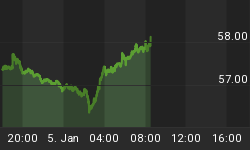With U.S. markets making new highs, many have put Europe on the back burner. It may be time to slide that pot forward a bit. According to the AP:
The number of people registered as unemployed in Spain is bordering on 5 million as the country remains mired in recession. Labor Ministry figures released Monday showed the registered jobless figure surged by 132,055 in January to 4.98 million. Spain is struggling to emerge from its second recession in just over three years with its economy battered by the collapse of the once-key real estate sector. The country's unemployment rate was at 26 percent at the end of the fourth quarter, up 1 percent from the previous three-month period.
We noted cracks in the U.S. stock market on January 24 and January 31. Now, European bond markets have started to crack. Bond yields rise when the desire to sell is greater than the desire to buy. Rising yields are indicative of increasing concerns. Spanish yields have quietly been creeping up.

"The Euro Crisis Is Not Over."
Waves are picking up on the European political front as well. From Bloomberg:
Europe's political tremors risk spoiling the region's market calm, with corruption allegations buffeting Spanish Premier Mariano Rajoy and Italy's Silvio Berlusconi narrowing the front-runner's lead as elections loom. Rajoy, facing opposition calls to resign amid contested reports about illegal payments, travels to Berlin today as euro- area leaders schedule a flurry of meetings this week ahead of a Feb. 7-8 European Union summit. Last week's nationalization of the Netherlands' fourth-largest bank and a 2.17 billion-euro ($3 billion) loss at Deutsche Bank AG underscore the fragile economic health in the region. "The euro crisis is not over," German Finance Minister Wolfgang Schaeuble said Feb. 1 at the Munich Security Conference where fellow panelists included Deutsche Bank co-Chief Executive Officer Anshu Jain. Still, "we're in a much better position than we were a year ago," the minister said.
The stories of alleged illegal payments have impacted the confidence of bond holders. Italian bond yields are making higher highs instead of lower lows, which is not a good sign for global stocks if it continues.

U.S. Laggards Show Emerging Cracks
Last week's employment report in the United States helped push the S&P 500 to a new 2013 high, which is unquestionably bullish when viewed in isolation. The bulls still have control of the markets, but behind the scenes some cracks have started to appear. The following "risk-on" ETFs lagged the S&P 500 (SPY) last week, which is not what typically occurs during a sustainable advance: small caps (IWM), materials (XLB), industrials (XLI), consumer discretionary (XLY), metals & mining (XME), retail (XRT), and mid caps (IJK).
Upside Potential vs. Downside Risk
As stocks continue to push higher and higher, the odds of a market correction increase. We are happy to rejoin the ever-growing crowd of bulls, but we need to see market internals improve and bond yields calm down in Spain and Italy. Could the U.S. markets push to another new high this week? Sure, but that would only increase the odds of a reversal.















